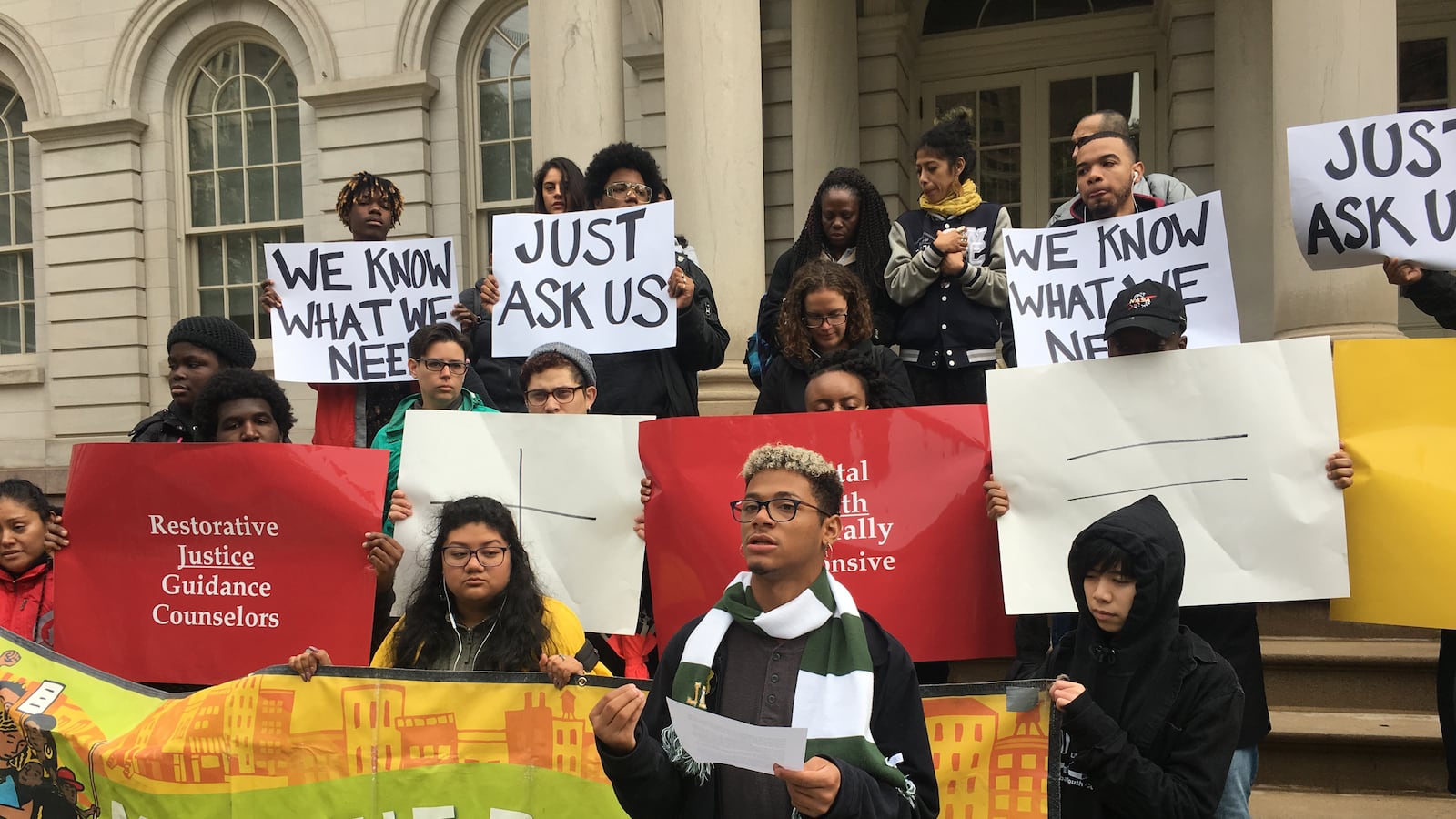Confusion among principals and teachers about just what constitutes bullying is one reason New York City schools are not doing enough to track incidents of bullying, harassment, and discrimination, according to an audit released Wednesday by the state’s comptroller.
State regulations require that a “single verified incident” of bullying be logged in the city education department’s Online Occurrence Reporting System, which is a record of all incidents in schools. But auditors found that some educators were mistakenly following a city discipline code that defines bullying as “a pattern of behavior” or otherwise misunderstood the different forms bullying can take.
“Even before school officials report bullying and discrimination to the state, there seems to be confusion at the local level over what needs to be reported,” said New York State Comptroller Thomas P. DiNapoli in a statement.
For example, auditors spoke to one assistant principal “who stated that incidents were only entered if a physical fight took place, while another stated that an incident should only be reported if the action was repetitive,” the report states.
The comptroller’s office conducted the audit, which covers a roughly three-year period from July 2015 to June 2018, to determine whether the city’s education department was complying with the Dignity for All Students Act, or DASA.
That New York state law, which took effect in 2012, was designed to ensure a safe environment for all students in schools, on schools buses, and at school functions. Resulting regulations require that claims of student-on-student bullying, intimidation, harassment,or discrimination be properly entered in the city’s reporting database within 24 hours of a principal or other designated school official becoming aware of an incident, which is assigned an infraction code at that time, and then investigated. Claims deemed “material” by the city’s Office of Safety and Youth Development are then reported to the state education department under one of 12 “bias” categories, one of which is “other” and is used too frequently, the audit also found, making it hard to determine what’s causing bullying in schools.
In addition to examining school survey reports, auditors visited 25 schools, where they interviewed school personnel, and looked at the data submitted to the state education department for the 2014-15 school year.
Beyond the lack of alignment between DASA regulations and the city education department’s discipline code and overuse of the “other” category, the report noted that over the three-year span of the audit, 19 percent of incidents weren’t initially entered, and nearly half weren’t updated, in a timely manner.
In addition, auditors found wide discrepancies between school survey data and information reported to the state education department. For instance, Hillcrest High School in Queens, whose enrollment tops 3,000 students, did not report any material incidents of bullying, harassment, or intimidation to the state for the three years ending in June 2017. But in the 2016-17 school year data, 18 percent of students reported on surveys that they were subjected to such behavior by other students some or most of the time, according to the report.
Miranda Barbot, a spokeswoman for the city’s education department, said officials were devoted to making schools safe, welcoming environments for all students. “We’ve already re-organized our safety office, added staff and a data tracker, and are now completing a daily review of all bullying incidents,” she said. “We take bullying extremely seriously, and we’re investing $8 million in anti-bullying initiatives, and increasing trainings to school staff on how to report and address any allegation of bullying.”
The audit is consistent with a pair of reports issued by New York City comptroller Scott Stringer in June that showed an increase in bullying in city schools, and that urged more oversight and streamlined rules for recording incidents involving school safety. Violent incidents were mostly likely to occur in schools that had no social worker.
Wednesday’s report comes just a little more than a year after the city introduced an $8 million package of anti-bullying programs after a student who claimed to have been the victim of bullying stabbed a 15-year-old classmate to death inside their Bronx school. The initiative included anti-bullying training for students and school staff members, funding for student-support clubs such as those for lesbian, gay, bisexual, and transgender students, a new online tool for families to report bullying incidents, and extra training and support to the 300 schools that then had the highest bullying rates.
Emily DeSantis, a spokeswoman for the state education department, noted her department and the Board of Regents had also made increasing funding by another $8 million to promote a positive school climate and culture to help prevent bullying a priority request this year.
The audit report offered several recommendations to the city’s education department, including better aligning its discipline code consistent with the definition of bullying spelled out in the commissioner’s regulations, and proactively identifying schools at risk of underreporting incidents or incorrectly assigning some incidents under the catch-all “other” bias category.
“The audit from Comptroller DiNapoli’s office shows that while there has been some effort on the DOE’s part to comply with DASA,” said State Senator John Liu of Queens, the newly named chair of the state Senate’s subcommittee on New York City education, “there is much room for improvement.” He pointed to the necessity that the education department work “with more uniformity, especially on establishing what constitutes bullying and harassment, as well as, a clearer reporting timeline.”

